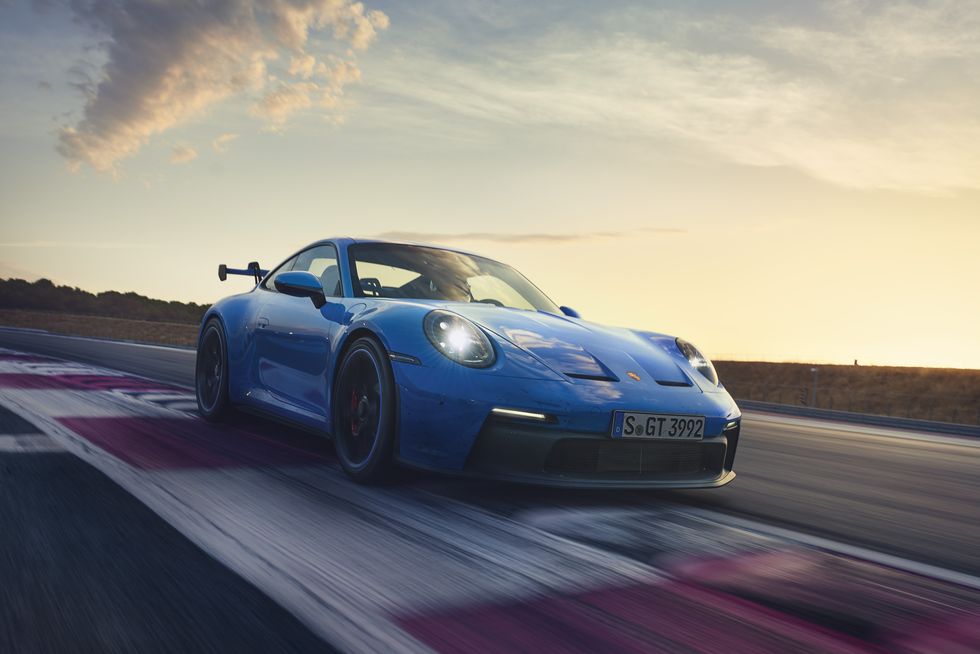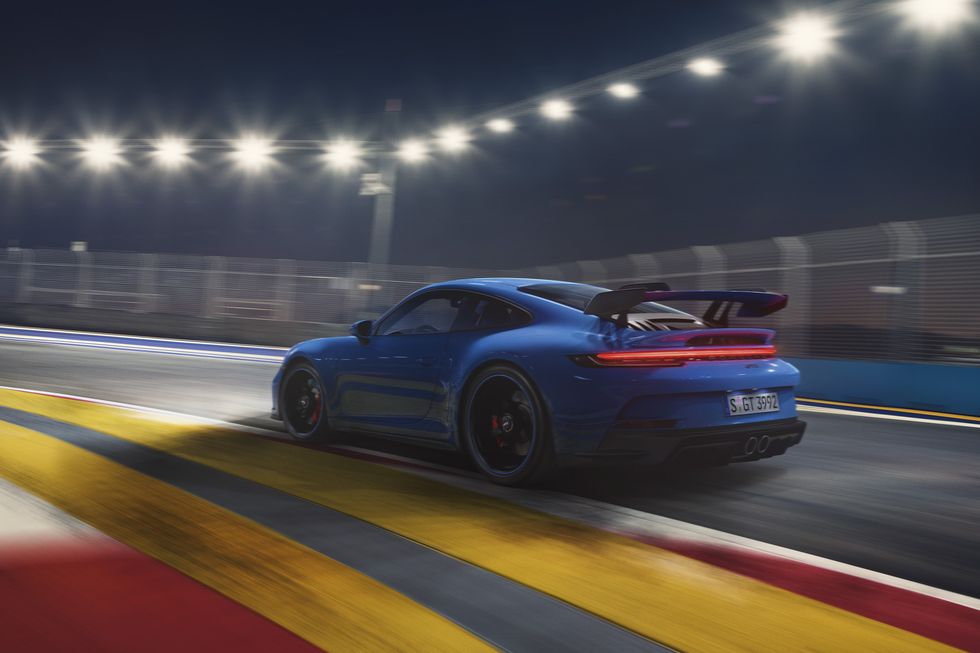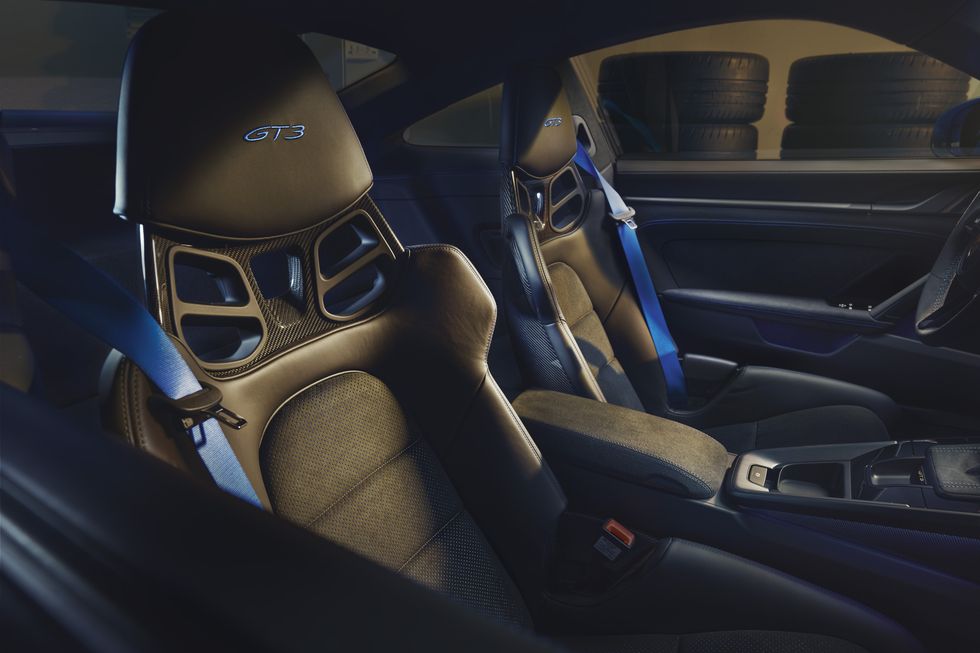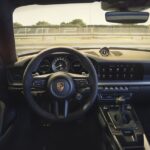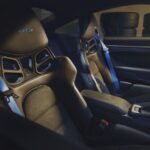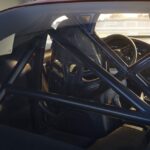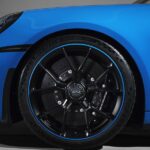The Porsche 911 GT3 enters its fourth generation with the arrival of the 992 iteration. Since its debut in 1999, the GT3 has maintained a naturally aspirated flat-six engine, a screaming redline, track focus, and lack of luxuries (including a back seat). Enthusiasts will be glad to know that the latest GT3 doesn’t deviate from that formula while elevating the car’s performance.
One of the biggest updates for the new model is a switch to unequal length control arms for its front suspension. This is the now the first road-legal 911 to abandon struts for the front suspension, and follows the architecture of the 911 RSR race car. The benefit of this setup is camber stability by retaining the the tire’s contact patch through turns and turbulence. Porsche says the new GT3’s ride quality hasn’t changed but its spring rates have doubled, owed to new adaptive dampers with 10 millisecond intervals of adjustment. No piece of the GT3’s front suspension is ported from the standard 911.
A more visually apparent change is the new GT3’s rear wing. Perched on swan-neck pylons like the McLaren Senna, the supersized wing functions just like an airplane’s appendages. When the air flowing beneath the wing moves faster than the air above it, downforce takes effect. The pylons have an aero-efficient profile that minimizes airflow disruption beneath the wing, a major defect of conventional mounting. Porsche says the new GT3 generates 150 percent more downforce than the last generation. To achieve these numbers does require some manual labor: operators must set the rear wing and two front diffusers to their most aggressive of four positions.
Behind the cabin sits a non-turbocharged 4.0-liter flat-six engine that revs to 9,000 rpm. Output stands at 502 horsepower and 346 pound-feet of torque. Peak power hits at 8,400 rpm and peak torque arrives at 6,250 rpm. In other words, it pays to rev the GT3 all the way out. While other manufacturers may be forced to retire their naturally aspirated engines very soon, based on displacement and cylinder count, Porsche may yet be able to offer another few years of its N/A flat-six.
Porsche doesn’t touch the standard seven-speed dual-clutch automatic gearbox from the last GT3 (which is 40 pounds lighter than the eight-speed found in other 911s), even retaining the full-handled gear selector instead of adopting the diminutive one found in other 992-generation models. In manual mode, drivers can shift either with the gear lever or via shift paddles on the steering wheel. DIY-ers will be pleased to hear Porsche will still offer a six-speed manual transmission. 0-60 mph is 3.2 seconds for PDK-equipped cars and a half-second slower for manual models. Top speed is 197 mph with the PDK and 198 mph with the manual. Stellar brakes match the GT3’s performance; 16.1-inch front rotors can be had in steel or carbon ceramic configurations.
Porsche claims the new GT3 lapped the Nürburgring Nordschleife in less than seven minutes, according to the new benchmark (which is a longer lap than the old standard).The test car was shod in optional Micheline Pilot Sport Cup 2R rubber on 20-inch front and 21-inch rear wheels.
Pricing for the 2022 Porsche 911 GT3 is TBA, but expect a sticker somewhere north of the 2020’s $145,650 starting figure. Deliveries begin this Fall.

